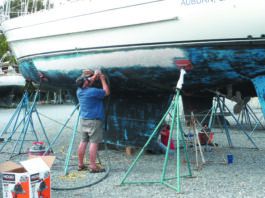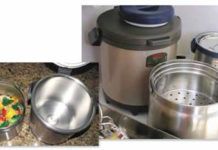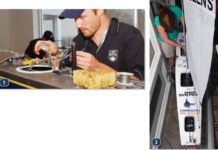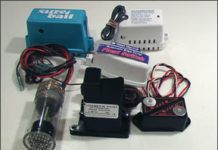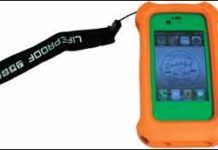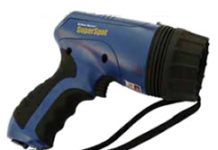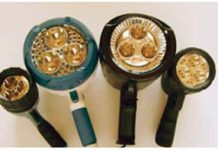Search for Safe Boarding Boost
Anyone thats ever hopped on a Jacobs ladder at a fall festival can relate to the feeling of the rope-attached steps swaying wildly from side to side under your weight. Suspended boat-boarding steps can inspire that same unsteady feeling. Ascending the steps, which curve in along the chines of a boat, can throw a climbers center of gravity backward, away from the hull-possibly sending the climber into the drink.
Taking the Other Way Home
Our 38-foot catamaran, Josepheline, was built by Lightwave Yachts near Brisbane, Australia. Josepheline draws 3 feet, 6 inches and has a 22-foot beam. It is a fairly conventional design: mini fin keels, two forward queen berths under the bridgedeck, a double berth aft to starboard, and a decent sized shower and head located aft in the port hull. Shes stood the test of time-and distance. Weve cruised about 35,000 nautical miles aboard Josepheline.
When Technology Catches the Wind
A lot can be learned from really small boats that carry no crew. In fact, sailing robotics-SailBot for short-is attracting sailors and engineering students from universities across North America and Europe. These competitive research programs are a proving ground for on-the-water autonomous craft, and they give us a glimpse of what the future of marine electronics may have in store.
Finding the Bright Spot: Marine LED Spotlights
A marine spotlight, as opposed to a floodlight or flashlight, must sufficiently illuminate an object at a considerable distance. Clearly seeing navigation aids, floating debris, breaking surf, or a man overboard requires a dependable device with a bright beam of light, one that can be kept at the ready. The best marine spotlights combine improved LED technology with sufficient power, a quality reflector lens, single-hand ergonomics, quick recharging times, and a rugged durability that includes withstanding submersion. We evaluated seven LED spotlights, including the new Streamlight Waypoint Rechargeable and three new West Marine lights.
Where Credit Is Due: August 2013
Two years ago, I purchased a Water Witch bilge pump switch. When it developed a glitch, I called Kathleen at Water Witch Inc.s San Diego office (www.waterwitchinc.com). She asked me a couple of questions, then assured me the replacement part would be shipped the following day. It was, followed by an email saying it had shipped. It arrived 10 days later (international), complete with a personal note. Does it better than this? I think not.
Seeing the Light on Night Vision
A few weeks ago, I found myself in the desert at night and reflected upon how much the wide expanses of sand and rock in the American Southwest resemble the sea-especially after the sun has set. Away from the loom of the lights of Moab, Utah, my wife and I stood in an empty parking lot looking to the east, where the pyramid peaks of the La Sal mountains were silhouetted by the light of the full moon, still invisible below the horizon. Wed arrived to Arches National Park at night, driving through the blackness, following our headlights to the third or fourth pullout on the winding road into the park. We missed the sign identifying the pullout, so the geographical feature that the viewpoint was meant to serve remained a mystery.
Summer Sailing Gear
Summers warm breezes and lazy weekends have arrived, so PS testers have put together a lineup of cool toys and tools for the dog days. Tower Adventurer Inflatable Standup Paddleboard: Inflatable SUPs are sprouting up everywhere on the Internet; many boards are identical, made by different brands at the same factories in China. Quality varies. Generally, boards 6 inches or thicker offer better stiffness and stability, making them easier to ride.
Testers Search for an All-star LED Spotlight
With numerous types of spotlights flooding the market, Practical Sailor testers narrowed the test field to seven LED spotlights from manufacturers that have done well in our past tests: West Marine, Sirius, Coleman, Brinkmann, and Streamlight. Prices ranged from $50 to $150, and all but one test light had a rechargeable battery. The evaluation focused on several key criteria in choosing the best spotlight: ergonomics, beam pattern, beam luminance, beam effectiveness at a distance, and service time (how long to half strength and how long to recharge).
Testers Check Beam Patterns and Illumination
Testers evaluated a number of spotlight features. Although some points such as ergonomics involved a small degree of subjectivity, features such as brightness carried much heavier weighting in the final ratings. Here is what we looked at: Ergonomics. Some models merely have an on–off switch; others add one or two controls to change power, or activate a strobe feature, or turn on a red beam. There were, however, as many configurations of use and meaning of the switches as there were spotlights. Testers concentrated on how these are used: Is one–hand operation possible? Are the controls logically placed? Do they snap into position, providing satisfying feedback? Can the light be turned on by accident, possibly leading to a depleted battery?
Orion Reports on Defective Flare Investigation
In the July 2011 Mailport, Practical Sailor reported that a new Orion handheld flare had malfunctioned during an emergency training course at the Annapolis School of Seamanship. The defective flare had melted through its end cap, allowing hot, melted slag to drip out.



































